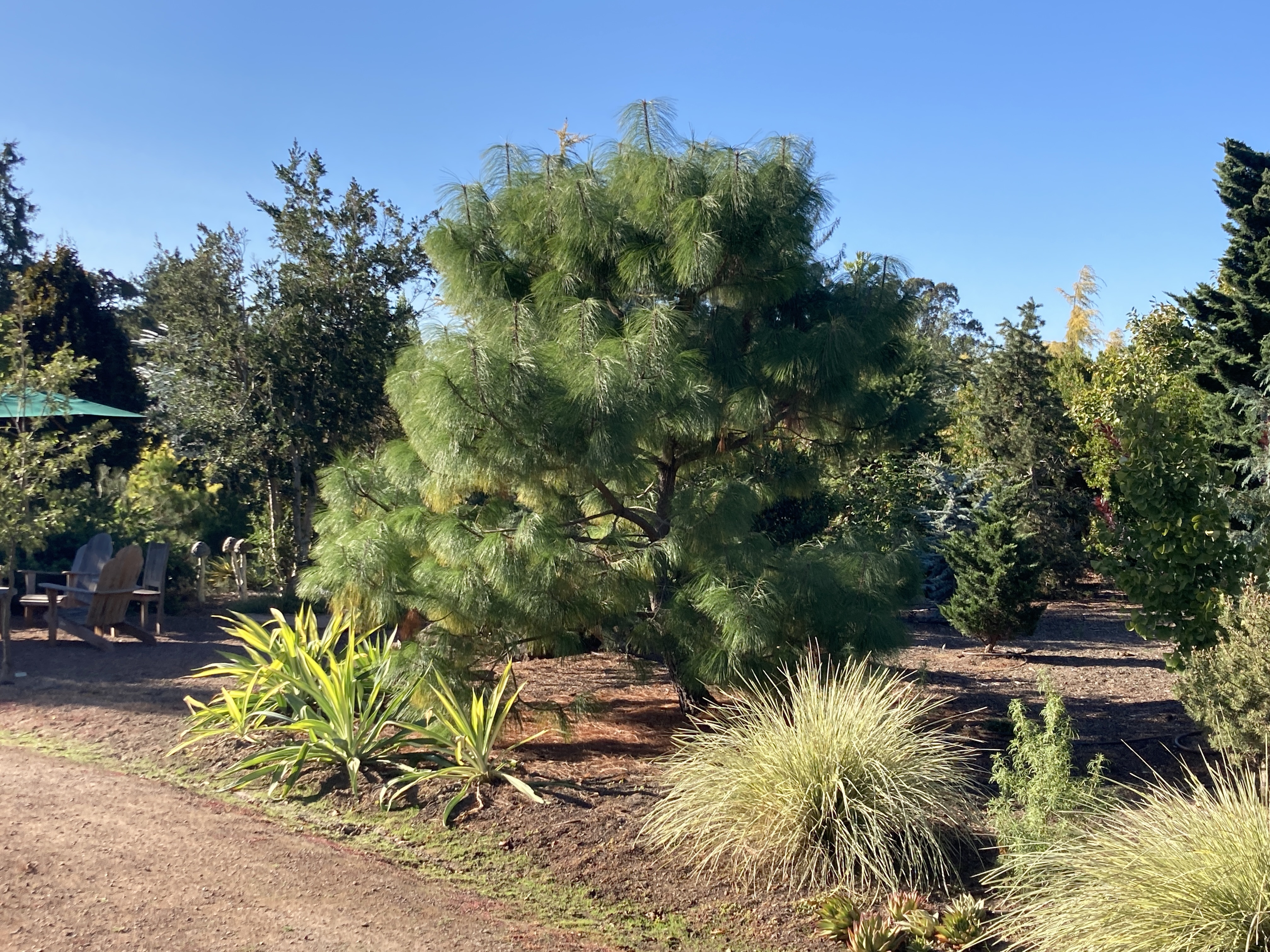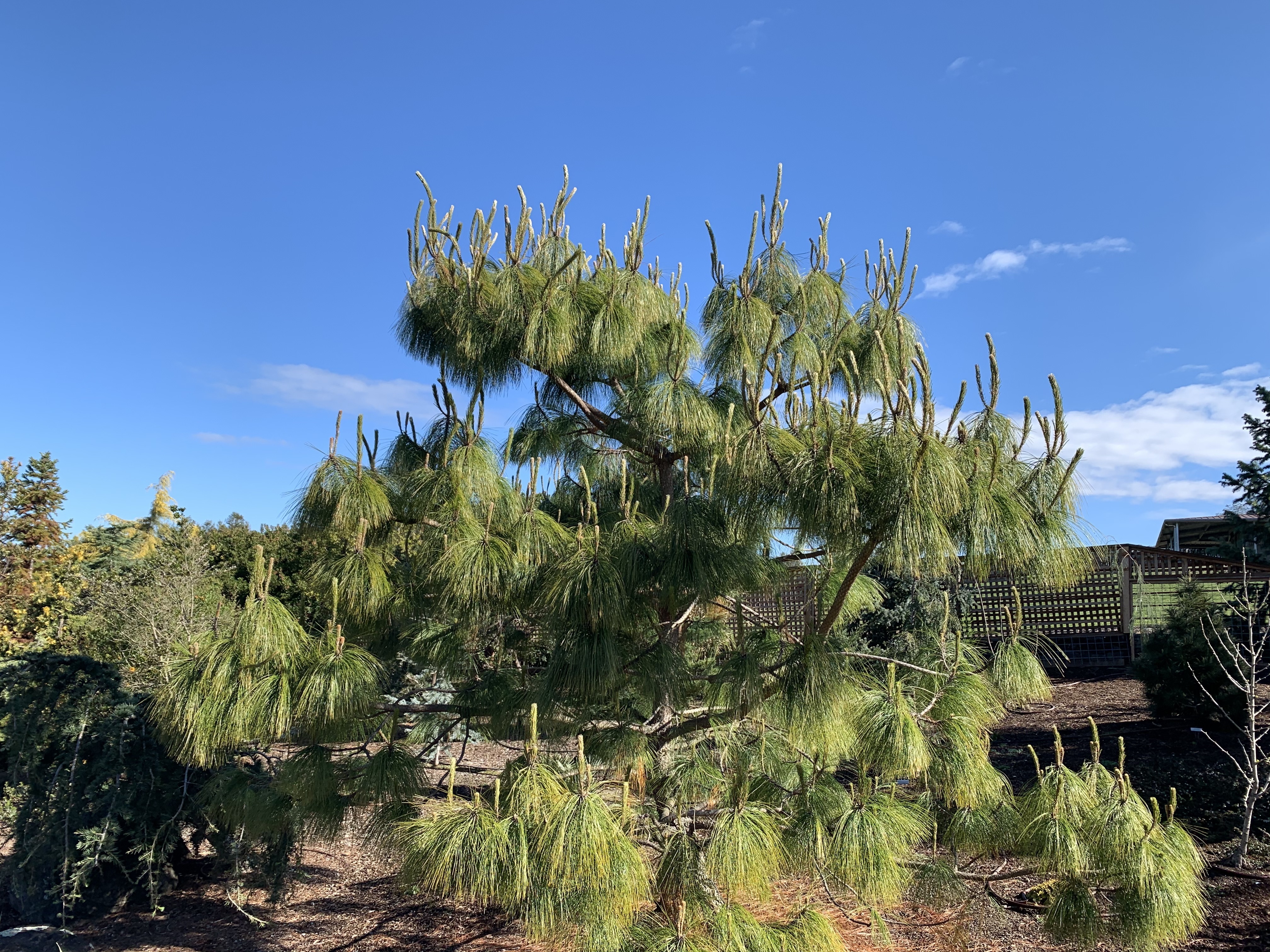Pinus pseudostrobus var. apulcensis, as described in 1909 by (Lindley) George Russell Shaw, in Publications of the Arnold Arboretum, is commonly known as Apulcan pine, or pino. The varietal name literally means "from Apulco," the municipality in Zacatecas, Mexico where C.T. Hartweg collected the type in 1838.
Description. Alpulcan pine differs from the typical species in the following ways:
differences in seed cones: exposed portions of the seed scales and umbos are flattened rather than protruding and are usually darker than the apophyses.
Distribution. This specific variety is native to Mexico: Chiapas, Guerrero, Hidalgo, Puebla, Tlaxcala, W-C Veracruz, México, Oaxaca, and Veracruz. Also in the Guatemala highlands and N El Salvador. It is most common in Oaxaca, where it is perhaps even more common than var. pseudostrobus. It is often sympatric and occupies much the same habitat but seems absent from the driest locations.
Hardy to USDA Zone 9, cold hardiness limit between 20° and 30°F (-6.6° and -1.1°C).

